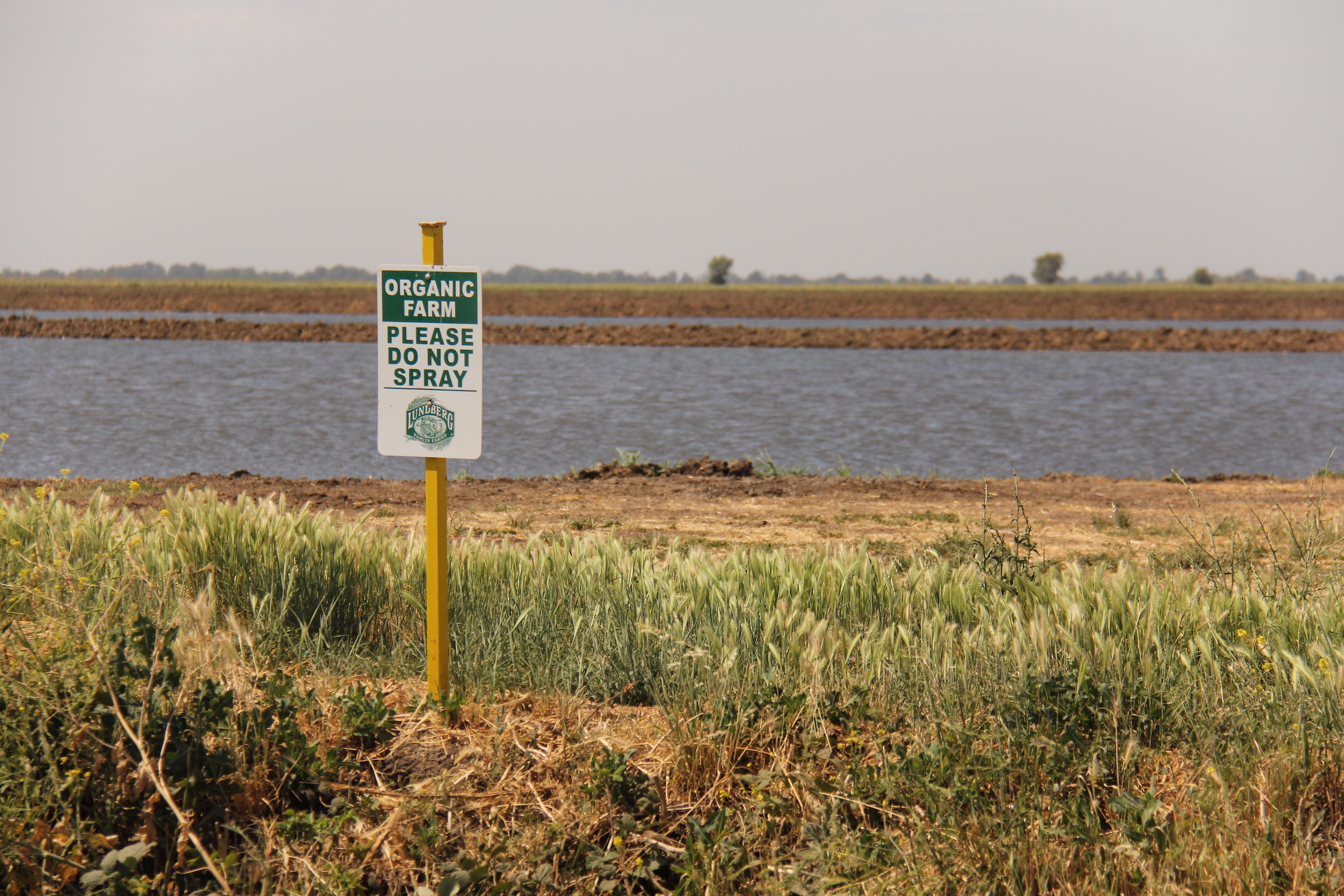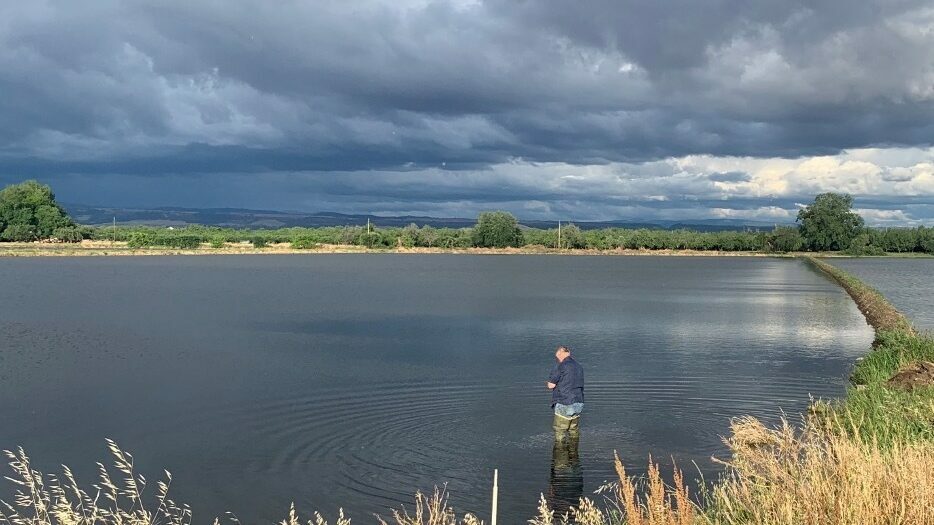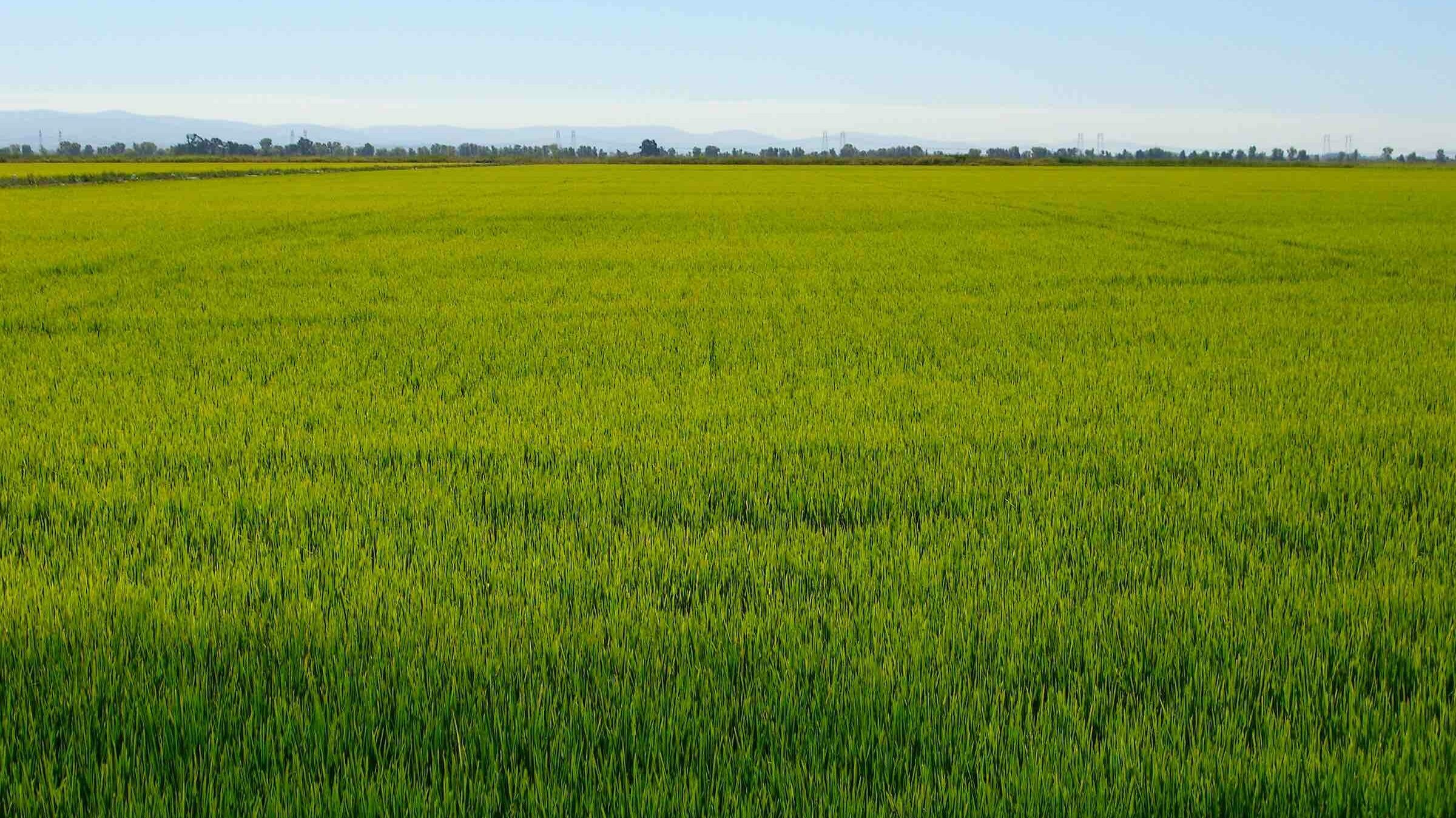
At Lundberg Family Farms, we believe every ingredient matters—whether you’re whipping up parmesan risotto, baking peanut butter rice krispie treats with brown rice syrup, or snacking on wholesome rice cakes—because different flavors complement, contrast, and build on each other.
It’s the same with farming: as we cultivate crops from the ground up, we consider how seed, soil, water, and air combine to create the best, most sustainable foods possible. It’s an approach our founders—Albert, Frances, and their four sons—adopted after they saw how the Dust Bowl stripped the land of its topsoil in the 1930s. When they moved to California in 1937, they decided to do things differently. To work in partnership with Mother Nature, not against her. So they cultivated eco-positive farming methods that build soil health, not degrade it. They tended to soil, air, water, and wildlife as carefully as their crops. And they became organic pioneers before people knew the meaning of the word.
The Rodale Institute provides a full breakdown of “Organic vs. Conventional Farming” on their website. But “the essential difference,” they write, “is that conventional farming relies on chemical intervention to fight pests and weeds and provide plant nutrition. That means synthetic pesticides, herbicides, and fertilizers.” In contrast, “Organic farming relies on natural principles like biodiversity and composting instead to produce healthy, abundant food.”
Today, many of our family’s rice fields have been certified organic for more than 30 years. In fact, we've been growing rice in California for more than 80 years. Ever wonder how we do it?
IT ALL STARTS WITH A SEED (AND A PLANE)
Here in California’s Sacramento Valley, you know summer is in full swing when temperatures are high and planes fly low over the rice fields.
Whether we’re growing basmati rice, sushi rice, arborio rice, or red rice, we start by leveling and flooding the fields. It can take days for a field to be fully covered in water. We also soak the seed in water for about 24 hours to weigh it down so when the seed falls from the plane, it will sink into the furrowed soil instead of floating on the water’s surface.
Once drained, the seed is loaded into a truck for transport to the airstrip. While it taxis, the seed has a chance to breathe, or become oxygenated. This jumpstarts the germination process so when the seed hits the ground, it’s ready to grow!
At the airstrip, the seed is transferred from the truck to the plane using a large funnel-like piece of equipment (otherwise known as a hopper truck). Keep in mind: this isn’t your average plane. Nor is it your average airstrip. No long security lines or complimentary beverages. Instead, single-engine planes barrel down narrow dirt roads cut into the side of rice fields. Then it’s up, up and away! As the New York Times writes,
"A typical flight might last only three or four minutes, as the pilot dive-bombs back and forth over the paddies. Immediately after landing, the pilot swings the plane around, and the seed truck approaches and refills the nose of the aircraft. A good pit crew can reload in about 90 seconds. The propeller never stops."
It takes several flights—or passes—to fully seed a field. For a wing-side view, check out our video from planting season…
It’s a bird, it’s a plane, it’s PLANTING SEASON!
DEEP WATER

Once the rice is planted, it can start to sprout within days. However, it’s not the only thing taking root in the fields. We’re lucky to grow rice in a climate that is semi-arid, which means it doesn’t rain a lot during the summer and it’s not very humid. This means we don’t have to worry much about disease or insects. Instead, our biggest challenge is managing weeds. As organic farmers, we say no to harsh chemical herbicides. Instead, we manage weeds naturally: with water.
After planting, we raise the water level just high enough to drown the grass weeds, but not so high that it harms the rice. It requires careful and, sometimes, near-constant observation as rice can only survive under water for about 48 hours longer than grass weeds. That’s our window to make sure the rice survives while the grass weeds drown. So we pull on our hip waders and hop into the flooded fields on a twice-daily basis to “read the leaves.”

Bryce Lundberg, a third-generation farmer, “reads the leaves” in a field of organic jasmine rice.
If you pluck one of the developing rice plants from the soil and carefully pick it apart, you can see the leaves, which are indicators of the plant’s progress. The fourth leaf has to get through the water for a breath of fresh air. Once it rises out of the water and the aquatic weeds emerge from the soil, we drain the fields and return the water to rivers and streams.
Then, it’s time for dry up!
Deep water and dry up in action!
DRY UP
Once the grass weeds are dealt with, it’s time to address the aquatic weeds. Dry up is a system our founders developed as they prepared to give up on a field of organic brown rice that had been overrun with aquatic weeds. “Let’s see how long we can let the rice dry up,” they said. Decades later, it’s our best defense against aquatic weeds—no herbicides needed!
As they grow, aquatic weeds tangle with and tug at the rice, keeping it from standing upright or, as we say, “developing a stand.” So we withhold water from the fields until the aquatic weeds shrivel in the sun and loosen their grip on the growing rice.
It’s a delicate balance—one that brings the rice to the brink of dying, just behind the aquatic weeds. So we have to watch the rice carefully and reflood the fields just in time to bring the rice back to life!

A green, hydrated field of rice. Soon, grains will begin to appear at the top of the plant and it will be time for harvest!
LET’S KEEP GROWING TOGETHER
Managing weeds with water takes more thought, time, and planning. But more than 80 years and four generations of farmers have taught us that good things usually do. That’s why we lead with a longer view of family, food, and organic farming. So we can keep growing together for another 80 years and generations to come!

Meet and Greet and Eat at
Lundberg Social Media Links